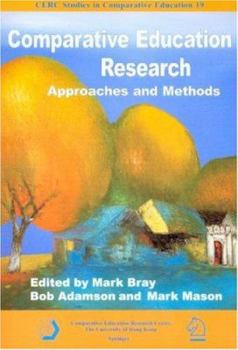Comparative Education Research: Approaches and Methods
Select Format
Select Condition 
Book Overview
Approaches and methods in comparative education are of obvious importance, but do not always receive adequate attention. This second edition of a well-received book, containing thoroughly updated and... This description may be from another edition of this product.
Format:Paperback
Language:English
ISBN:9628093533
ISBN13:9789628093533
Release Date:January 2007
Publisher:Comparative Education Research Centre, Hong K
Length:444 Pages
Weight:1.70 lbs.
Dimensions:0.9" x 6.6" x 9.4"
Customer Reviews
0 rating





